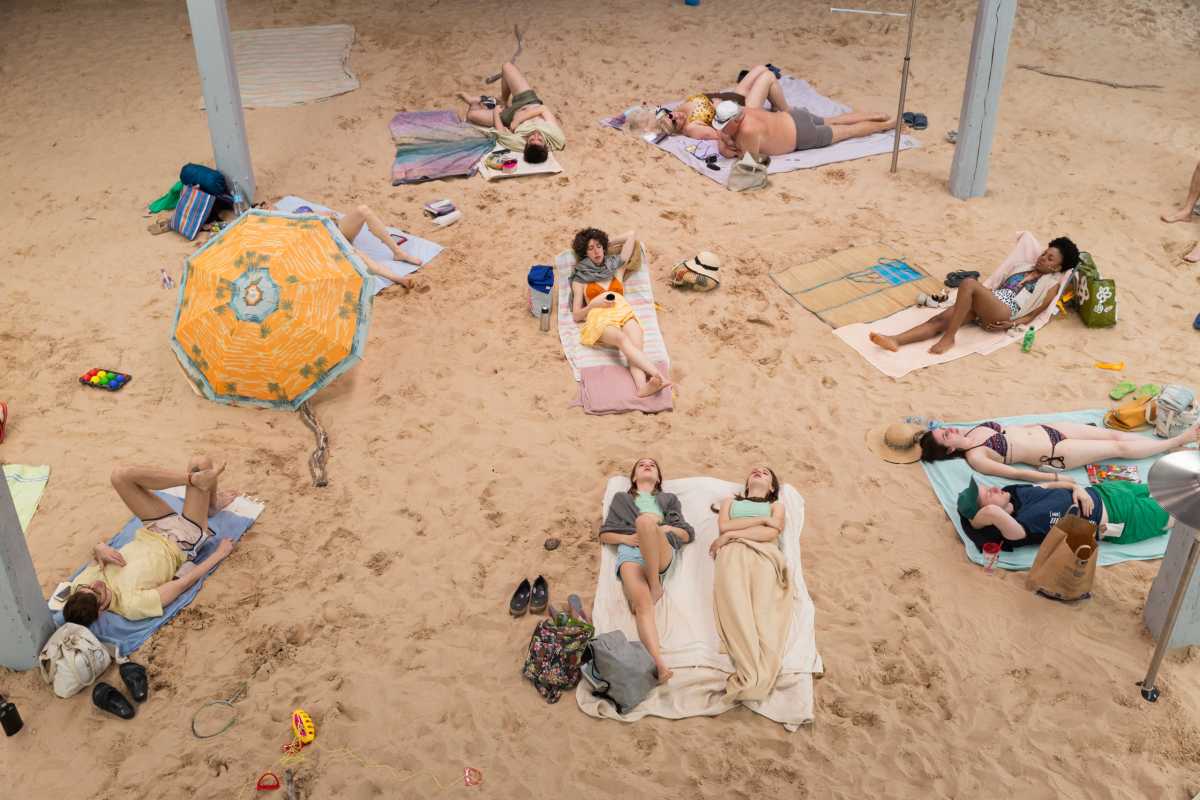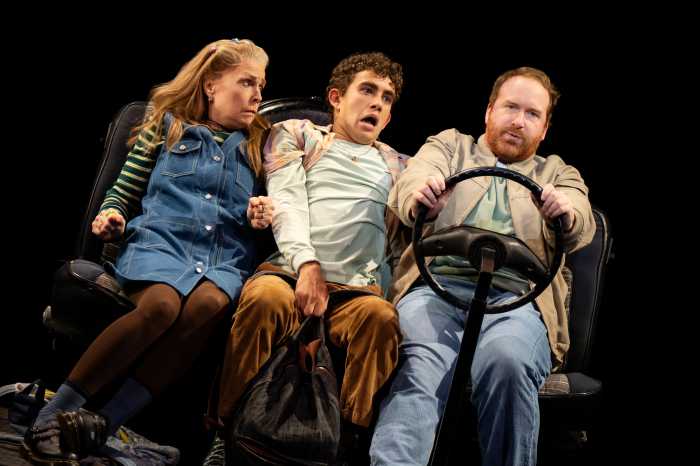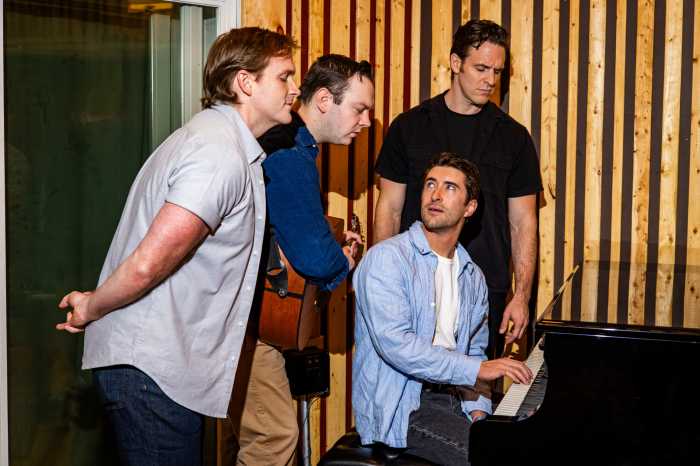Saving its most auspicious theatrical event for its last, 2021’s Fringe Festival presentation from Arcadia Exhibitions, ‘Sun & Sea’ should prove to be no easy picnic.
A sandy, angst-ridden opera-performance by Rugilė Barzdžiukaitė, Vaiva Grainytė and Lina Lapelytė — focused on the most daunting aspects of environmentalism and the horrors befalling our planet and its inhabitants — finds 13 vocalists ranting, harmonizing and ruminating on a not-so-fictitious memoir of the lives of its the sunbathers. North Philly’s historic, industrial Budd Co. space will be transformed into a diabolically luxurious beach front where nothing is spoon-fed or exactly as it seems from the sand, sunglasses and shade.
Richard Torchia, the Director of Arcadia Exhibitions at Glenside, PA’s Arcadia University, explains that ‘Sun & Sea’ is everything from a performative poem, a still life (with dozens of lives to study on the Budd’s man-made beach) and a tableau vivant (“a view of tired, exposed bodies pinned to the sand, baked by the sun, aware of a changing environment but not quite sure what to do except soliloquize their worries while on vacation”) and an integrated merger/crossover of theater, music, poetry and the visual arts, working together to create an experience that has something for everyone.
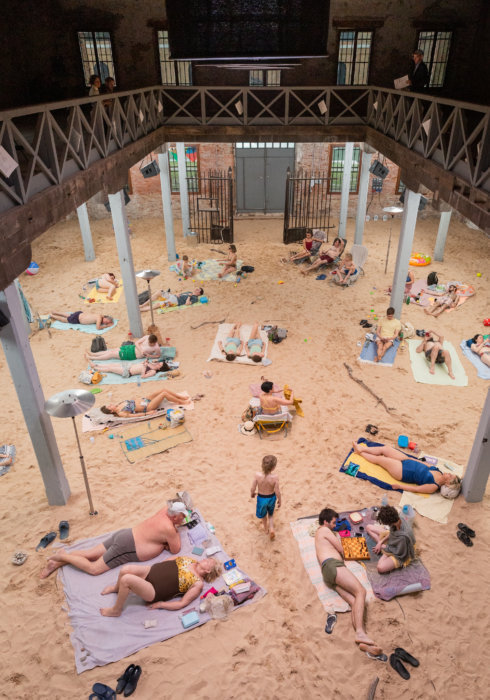
“That said, the role of the libretto is crucial and I urge people to make sure they follow along,” says Torchia. “’Sun & Sea’ provides an experience I have come to savor in artworks I love, which is the opportunity for each viewer to find something for themselves rather than having the work tell you what to notice or think. ‘Sun & Sea’ is exceptionally generous in this way.”
An enjoyable romp and a day at the beach, sure. But ‘Sun & Sea’ is also frozen in what Torchia calls a “permanent noon” on the last day on earth, a vibe particular to this very moment in time.
“It’s too easy to say that ‘Sun & Sea’ is ‘about climate change,’” says the Arcadia director. “It’s more about admission of personal and collective inertia, powerlessness and vulnerability in response to the unfathomable scale of the environmental crises – an admission that I think the artist’s hope will animate new forms of awareness, discourse – if not action.”
In previous stagings, ‘Sun & Sea’ has been recreated in an 18th-century opera house, a 19th-century marina, an empty, 20th century swimming pool and the Brooklyn Academy of Music’s Fisher Hall. The Fringe-Philly presentation, distinguished by a stage built from scratch inside a one-time rail manufacturing factory, forces the production to be different than other spaces it has played in, and new every time it is performed with its porous walls, greater beach circumference and the manner in which sunlight entering from its clerestory windows.
“While this is wonderful to experience on a sunny day, it also poses a challenge for the production given that the artists do not want actual sunlight to land on the beach,” states Torchia. “Their goal is to illuminate the sand with flat, cinematic lighting devoid of any shadows—illumination that is fixed at the moment of ” high” (or “solar) noon (rarely coinciding with 12:00 noon) when rays of sunlight are perpendicular to the surface of the earth and therefore difficult to see.”
Along with spreading 45 tons of locally sourced sand on its makeshift beach, Jason Manning (Metcalfe Architecture & Design), employed a special program equipped with GPS coordinates to conduct “sun studies” inside the building, and found the 3-8 p.m. time-frame during which the sun would be setting more amenable for its performance.
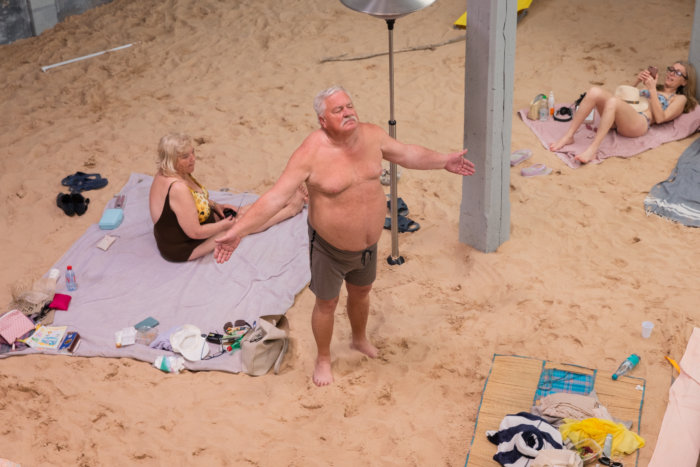
“As the real sun sets outside and the interior of The Budd becomes darker, the beach will appear to become more radiant,” says Torchia. “The Budd will thus temper people’s experience of ‘Sun & Sea’ in Philadelphia by offering a greater range of encounters with the changing light in the building. Viewers may end up talking about whether they saw the work before or after the sun set and how this difference colored their experience of the work.”
Combined with its solar focus, ‘Sea & Sun’s execution is organic to all the details of its singular staging – from its aerial view which places viewers in the position of the sun (“far enough to suggest a picture, close enough to read labels on products vacationers use on the beach”) and its hourly changes (“Sand castles built in one hour are destroyed the next”), to the location of who is vocalizing (“performers do not act or gesture, but are laying on their backs, singing”).
This all makes the ‘Sun & Sea’ experience as natural and inviting as it is disturbingly distanced and off-putting – especially when you consider that save for “performing” couples, the people on the beach do not know or interact with each other except in their singing, as many of those beach-goers are Philadelphia volunteers, far apart from the European cast members.
“An analog of a public gathering on a beach, the individuals gathered share their personal anxieties – but then become a choir –all without any kind of acting or theatrics or larger narrative save that of environmental turmoil,” says Torchia. “In this way the merging of characters’ voices is like the visual merging of people on the beach… Add to this real dogs and kids playing and the phone use, and have something that merges a looping, repeating structure that integrates real actions that occur only once.”
Showtimes for ‘Sun & Sea’ are Sept. 30 through Oct. 3 from 3-8 p.m. Tickets are timed and a cycle of the opera-performance lasts one hour. For information or to purchase tickets, visit fringearts.com/event/sun-sea



